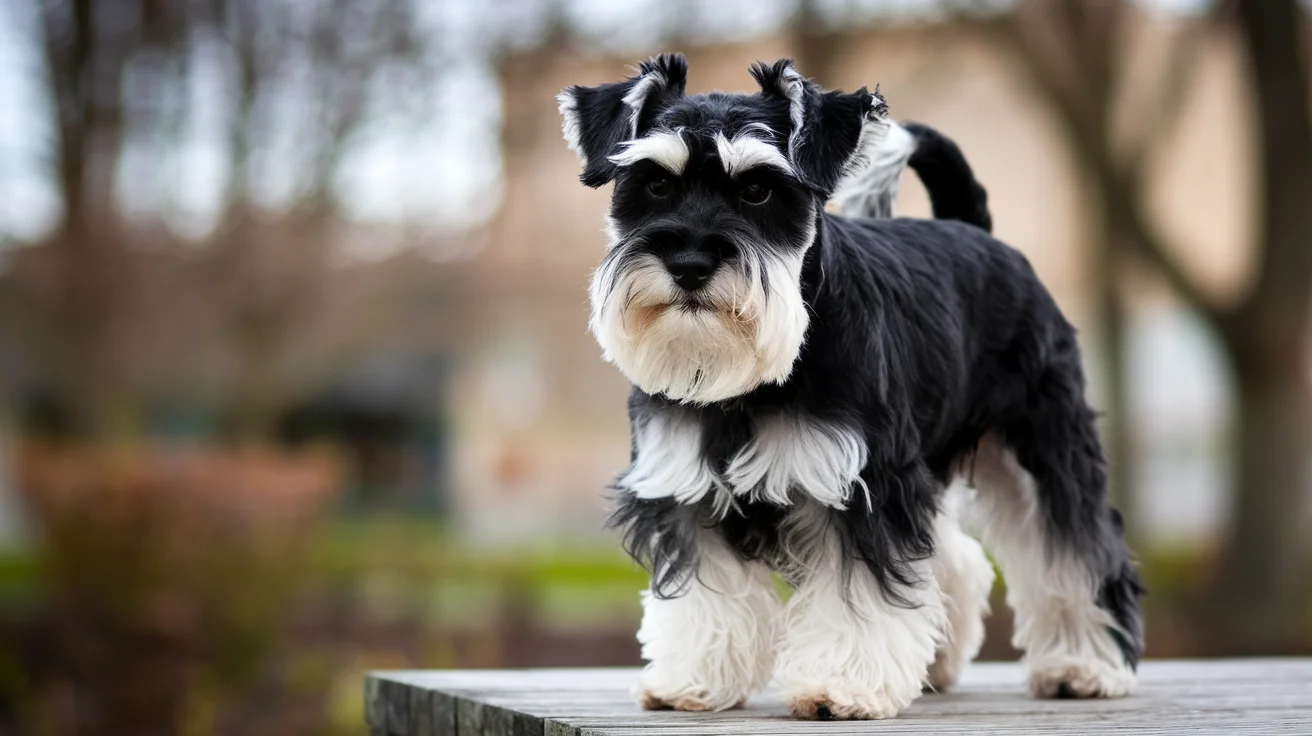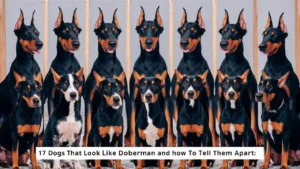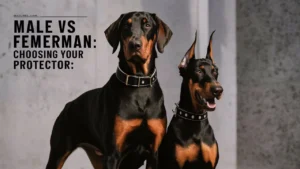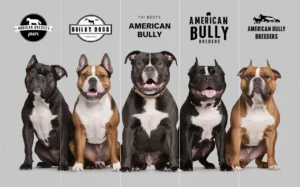Miniature Schnauzers are beloved for their lively personalities and distinctive looks. One of the most striking aspects of this breed is the variety of coat colors, each adding to their charm and appeal.
nderstanding these colors not only helps potential owners make informed decisions but also enhances appreciation for the breed’s diversity.
In this post, we’ll explore over nine gorgeous Miniature Schnauzer colors, delve into the genetics behind these hues, and discuss considerations for choosing a Schnauzer based on coat color.
Standard Colors of Miniature Schnauzers
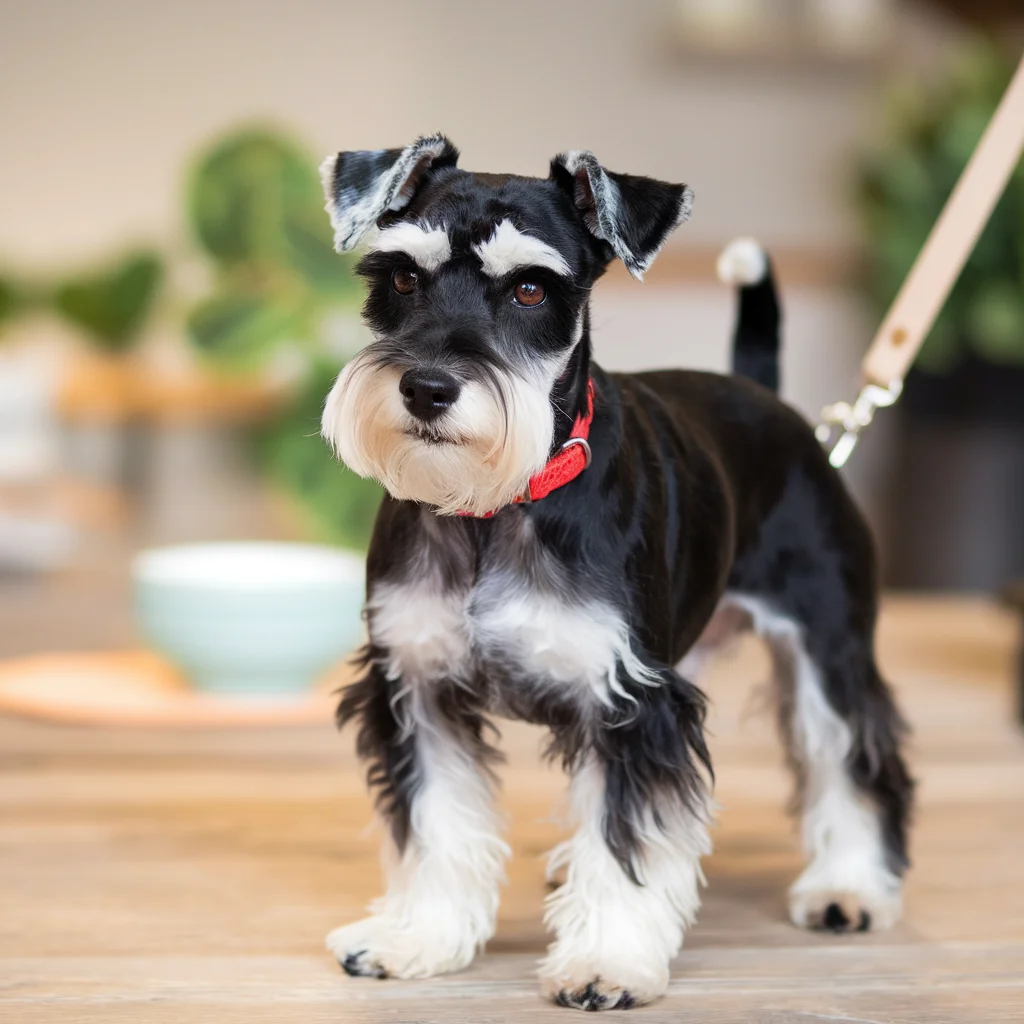
Miniature Schnauzers come in several recognized standard colors, each with its own unique characteristics and grooming needs.
Salt and Pepper Miniature Schnauzer
The Salt and Pepper Miniature Schnauzer features a unique blend of black and white hairs, creating a speckled appearance. This color is one of the most recognized and appreciated among Schnauzer enthusiasts.
- Characteristics: The salt and pepper coat varies in shade, with some appearing more silver or gray. This coloration can sometimes change as the dog matures, leading to an even more interesting aesthetic.
- Grooming: Regular grooming is essential to maintain the coat’s texture and appearance. A combination of brushing and professional grooming every 4-6 weeks helps to keep the coat looking its best.
Black Miniature Schnauzer
The Black Miniature Schnauzer is striking in its uniform black coat, which can appear glossy and rich.
- Common Misconceptions: While some may think that black dogs are less energetic, this color variant is just as lively and playful as its counterparts.
- Maintenance: Like other Schnauzers, the black variant requires regular grooming to prevent matting. Weekly brushing helps maintain a healthy coat.
Black and Silver Miniature Schnauzer
The Black and Silver Miniature Schnauzer is particularly eye-catching due to its two-tone coat.
- Color Pattern: Typically, these Schnauzers have a black body with silver accents on the eyebrows, beard, and legs. This contrast adds to their overall appeal.
- Temperament: Owners often report that these dogs exhibit friendly and playful behavior, making them excellent companions.
Non-Standard Colors of Miniature Schnauzers
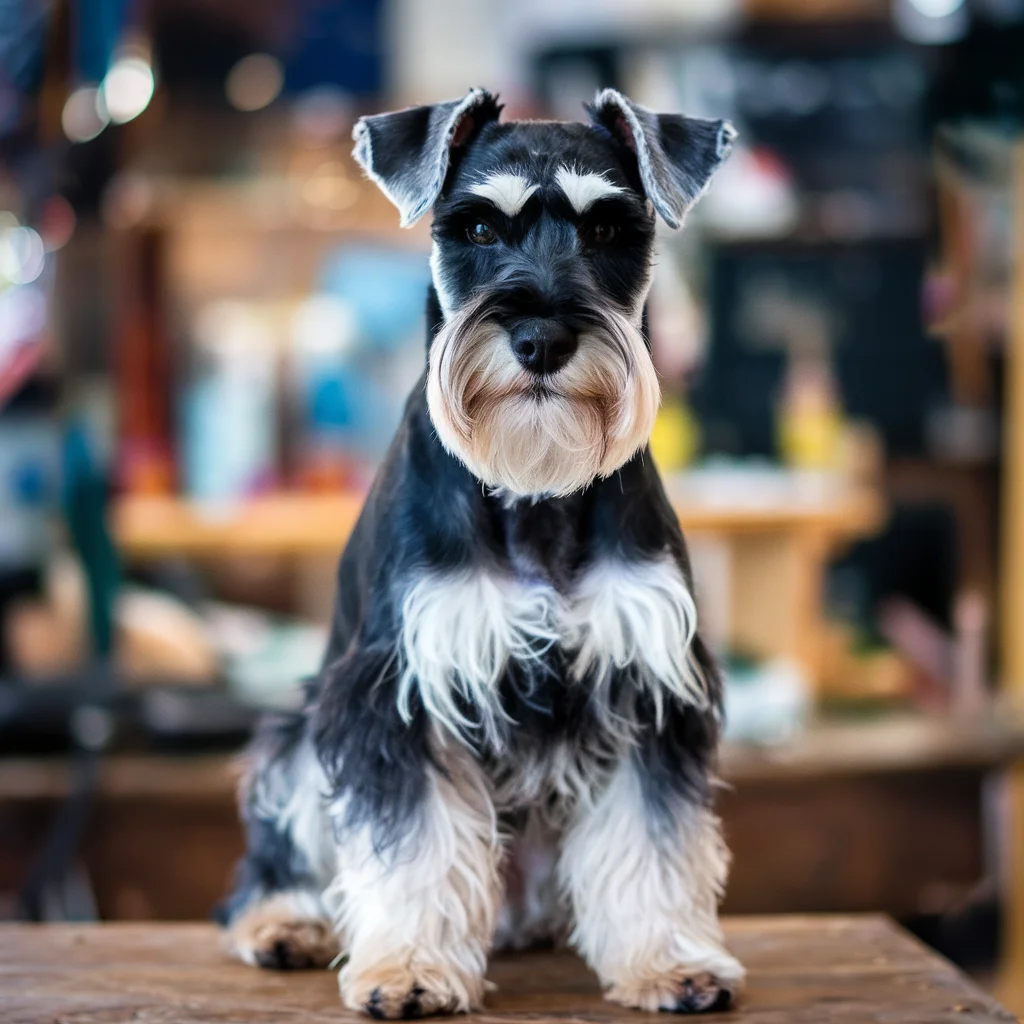
In addition to standard colors, Miniature Schnauzers can also exhibit non-standard colors, which can be just as beautiful.
White Miniature Schnauzer
The White Miniature Schnauzer is a rare but stunning variant. While not recognized by all breed standards, many admire their snowy coats.
- Breed Standard Acceptance: The acceptance of white Schnauzers can vary by organization, with some recognizing them while others do not.
- Special Care: White coats may require more frequent cleaning to avoid discoloration, especially around the eyes.
Parti Colored Miniature Schnauzer
The Parti Colored Miniature Schnauzer features a mix of two distinct colors, often with a predominantly white coat accented by patches of another color, such as black, chocolate, or liver.
- Social Perception: Many people find the parti color pattern particularly appealing, contributing to its growing popularity.
- Grooming Needs: Regular grooming is crucial to prevent mats in the coat, especially in the areas where colors meet.
Liver or Chocolate Miniature Schnauzer
The Liver or Chocolate Miniature Schnauzer displays a rich, chocolate-brown coat that can be truly mesmerizing.
- Genetic Factors: This coloration arises from a recessive gene, making chocolate Schnauzers less common than their black counterparts.
- Distinction: Some owners appreciate the unique look and personality traits associated with liver Schnauzers.
Merle Miniature Schnauzer
The Merle Miniature Schnauzer is known for its marbled coat pattern, which combines light and dark colors.
- Genetic Background: The merle pattern is due to a specific gene that creates variations in coat color and markings.
- Ethical Considerations: Due to potential health issues linked to the merle gene, it’s crucial to choose breeders who prioritize health and ethical breeding practices.
Blue Miniature Schnauzer
The Blue Miniature Schnauzer presents a rare, striking appearance with a grayish-blue coat.
- Rarity: Blue Schnauzers are not commonly seen, making them a special find for enthusiasts.
- Color Maintenance: Their coats can fade over time, requiring diligent grooming and care to maintain their vibrant hue.
Wheaten Miniature Schnauzer
The Wheaten Miniature Schnauzer features a warm, golden color that can range from light cream to deep gold.
- Characteristics: This soft, silky coat often has a softer texture compared to other Schnauzers.
- Grooming Tips: Regular grooming is necessary to avoid mats and tangles in the longer fur.
Black and Tan Miniature Schnauzer
The Black and Tan Miniature Schnauzer is known for its distinctive black body with tan markings, typically found on the legs, face, and eyebrows.
- Color Combination Details: This color pattern is not only visually striking but also showcases the breed’s unique features.
- Popularity: The combination of black and tan is well-loved among Schnauzer enthusiasts and adds to the breed’s charm.
Genetics Behind Miniature Schnauzer Colors
Understanding the genetics behind Miniature Schnauzer colors can help potential owners appreciate their choices even more.
- Color Inheritance: Miniature Schnauzers inherit their coat colors from a combination of genes. For example, black coats are dominant, while liver and chocolate colors are recessive.
- Common Myths: There are misconceptions surrounding coat color and behavior. The idea that certain colors indicate specific personality traits is unfounded; individual temperament varies widely.
- Responsible Breeding: It’s essential to select breeders who prioritize genetic health and avoid breeding practices that lead to color-related health issues.
Buying a Miniature Schnauzer Based on Coat Color
When selecting a Miniature Schnauzer, the coat color may be a significant factor in your decision.
- Factors to Consider: Aside from aesthetics, consider the breed’s temperament, health history, and grooming needs.
- Ethical Considerations: Some colors may be more desirable than others, but prioritize health and temperament over appearance.
- Finding Reputable Breeders: Look for breeders who conduct health screenings and can provide information on the lineage of their puppies.
Health and Color Considerations
While color can be a key factor in choosing a Miniature Schnauzer, it’s vital to consider health implications as well.
- Common Health Issues: Certain colors, particularly those resulting from specific genetic variations, may be associated with health concerns. For example, merle coats can sometimes lead to vision and hearing issues.
- Health Screenings: Ensure that breeders perform genetic testing to screen for conditions common in the breed, regardless of color.
- Maintaining Health: Regular vet check-ups and a balanced diet can help mitigate some of the health risks associated with specific coat colors.
Conclusion
Miniature Schnauzers captivate us not only with their lively personalities but also with their stunning array of coat colors. From the classic salt and pepper to the unique merle and blue variations, each color brings its own charm and character. Understanding these colors helps potential owners make informed choices while also fostering a deeper appreciation for the breed’s diversity.
Choosing a Miniature Schnauzer goes beyond color; consider health, temperament, and ethical breeding practices. By doing so, you ensure a happy, healthy companion that will bring joy to your life for years to come.
If you’re passionate about Miniature Schnauzers or want to learn more about responsible ownership, consider joining a breed club or community. Sharing experiences and knowledge with fellow enthusiasts can enrich your understanding and appreciation for these delightful dogs.
